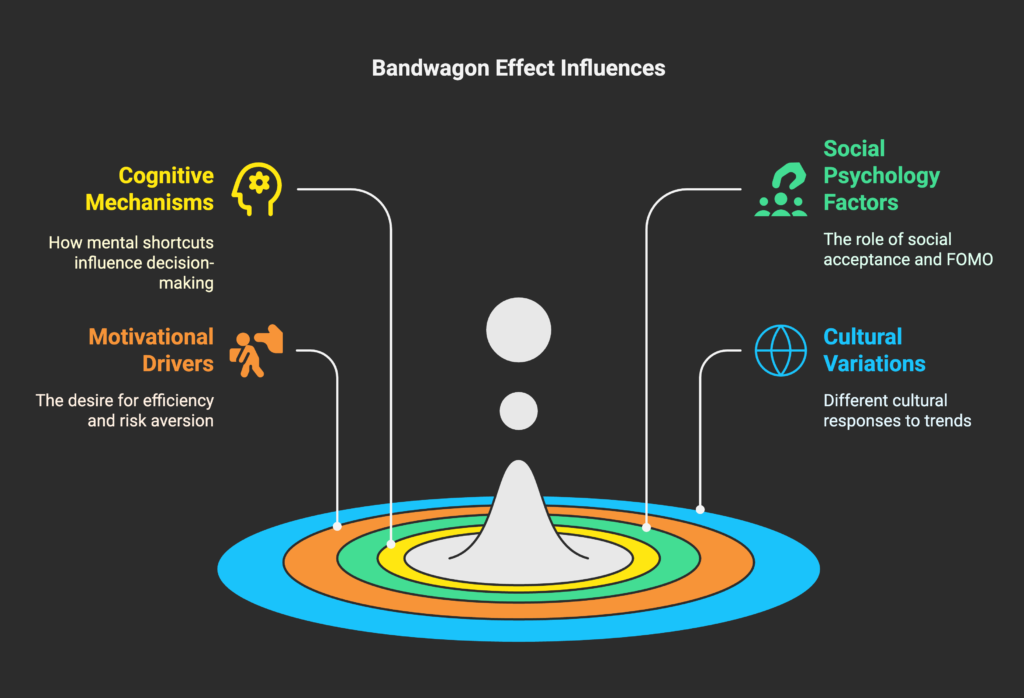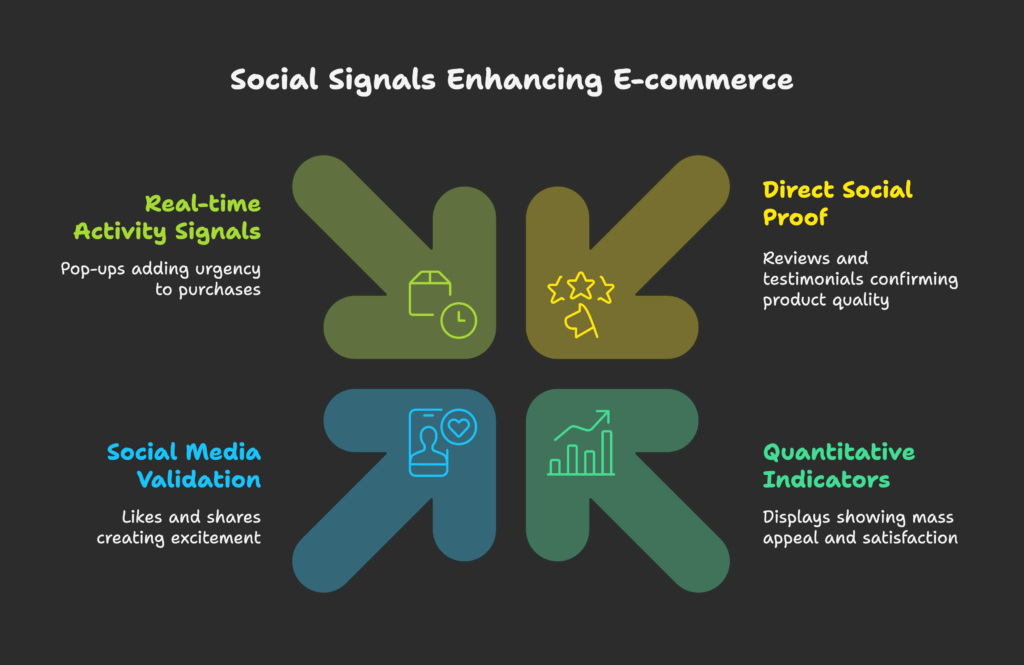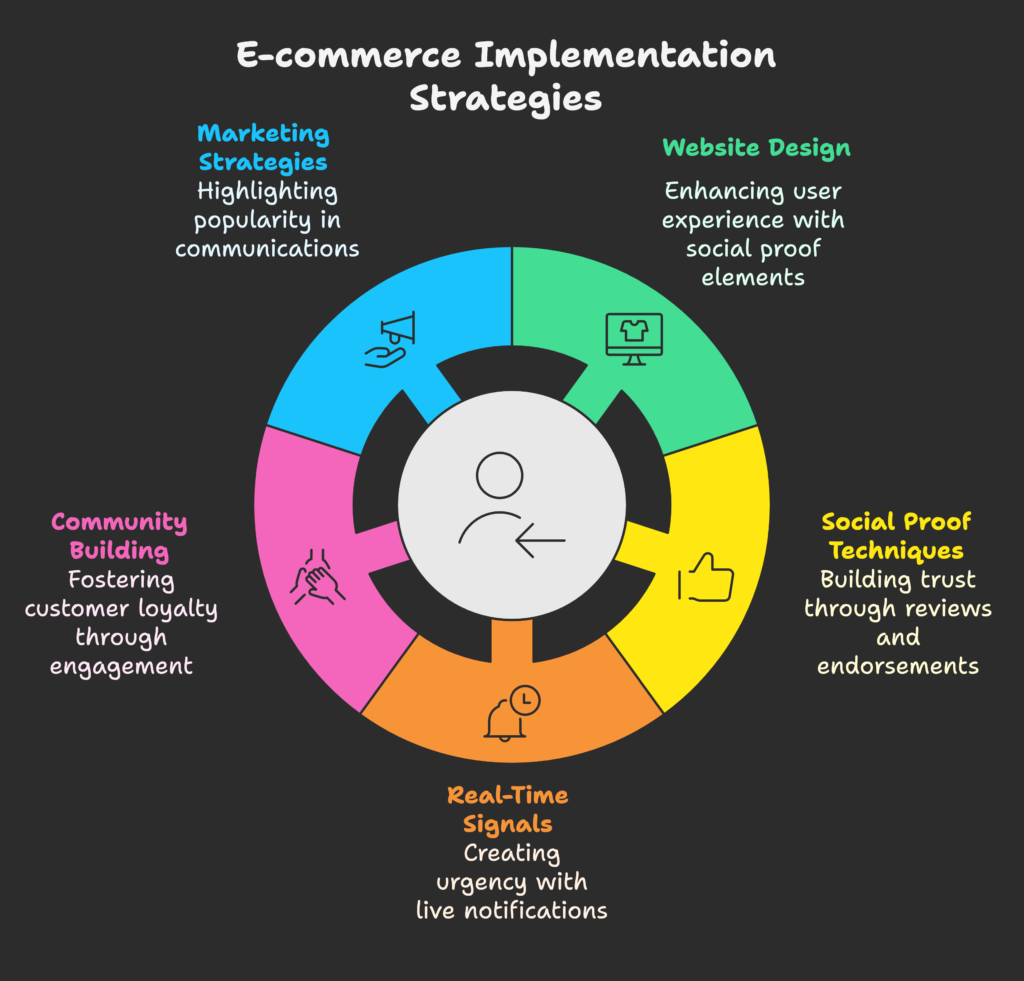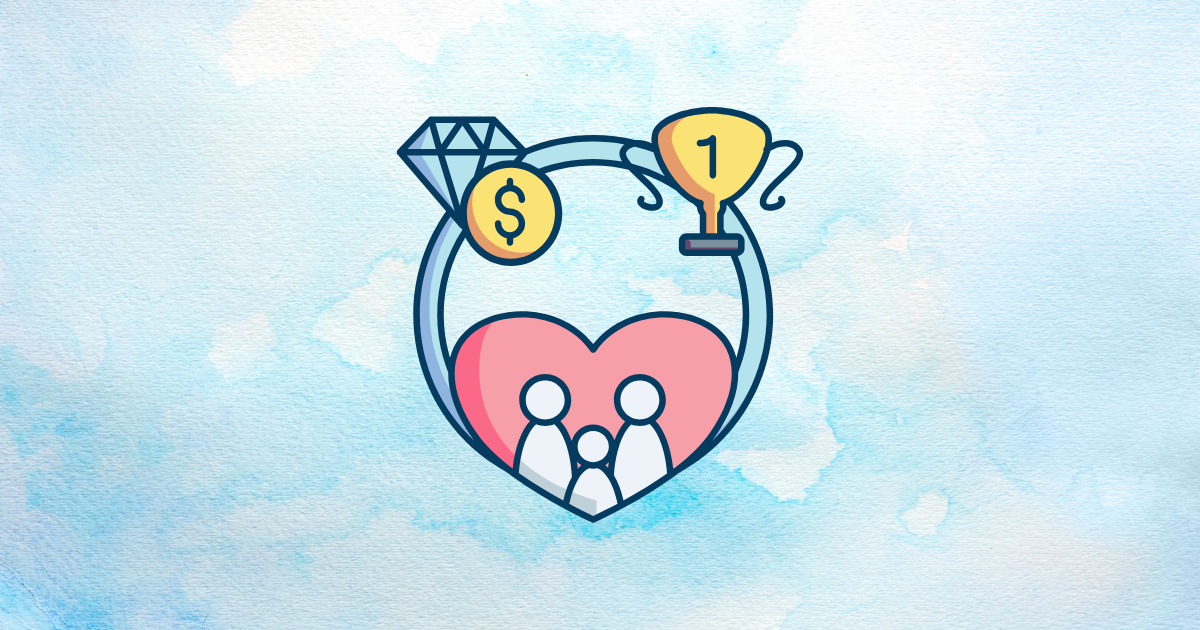Have you ever bought a product just because everyone else seemed to have it? Or joined a trend because you didn’t want to feel left out? These are fun questions to ask because the answers often highlight how powerfully we are influenced by social cues. In this article, you’re going to learn how the bandwagon effect shapes e-commerce today. You’ll see how people’s desire to “jump on the bandwagon” can boost your online store’s success, and you’ll discover strategies that you can start using right away. Ready to begin our journey into this fascinating topic? Let’s jump in!
Definition and Psychological Framework
The bandwagon effect is a cognitive bias where people adopt behaviors or beliefs simply because many others have done so. The term “jump on the bandwagon” comes from the 1848 U.S. presidential election, where political supporters would literally hop onto a campaign bandwagon to show affiliation. Over time, this idea moved from politics to marketing and now thrives in online shopping. In modern e-commerce, when large numbers of people buy a product or praise it, newcomers often feel confident doing the same, resulting in higher conversion rates.
Relevance to Modern E-commerce
Social influence has never been stronger than it is in our digital age. One reason is the power of online reviews, which can instantly tell you how many people are loving or hating a product. According to industry data, online businesses that highlight social proof often see a noticeable boost in sales. In a marketplace full of competition, being able to show a sense of “everyone’s buying this!” creates a tangible advantage. This advantage is what we call social momentum.
Article Scope and Objectives
Throughout this article, we’ll dig into why people follow others’ online behavior and how you can ethically use this in your store. We’ll also explore implementation tips, real-life examples, and ways to measure your success once you start applying bandwagon tactics. In the end, you’ll see how to balance persuasive marketing with authenticity.
We’ve set the stage for understanding the bandwagon effect. Now let’s move on to explore the psychological underpinnings behind this powerful phenomenon!
The Psychological Foundations of the Bandwagon Effect
In this section, get ready to learn how our minds work when we decide to follow the crowd. From cognitive shortcuts to the emotional thrill of belonging, you’ll find out why people feel compelled to do what others are doing.

Cognitive Mechanisms
Our brains often take shortcuts to save time and energy. Psychologist Daniel Kahneman explains how System 1 (fast and intuitive) thinking can push us toward quick decisions, such as buying a product because it’s popular. Meanwhile, System 2 (slow and analytical) thinking may confirm what we’ve already chosen to believe, leading to confirmation bias. When we’re uncertain—like not knowing which smartphone brand is truly best—seeing lots of positive reviews can amplify our belief that following the majority is safest.
Social Psychology Factors
Humans crave acceptance. We are social creatures who often look to others to gauge how we should act. This is where conformity and the fear of missing out (FOMO) come into play. If an online product appears incredibly popular, we worry we might regret not buying it. As a result, we jump in to avoid being left behind.
Motivational Drivers
The bandwagon effect also appeals to our need for efficiency. Instead of reading endless product comparisons, we assume “so many buyers can’t be wrong.” There’s also the desire to be on the “winning side” or to show we own a hot item that everyone’s talking about. Along with that comes risk aversion: purchasing what the crowd recommends feels safer because it has already been validated by others.
Cultural and Demographic Variations
Not everyone experiences the bandwagon effect in the same way. Different cultures may emphasize group harmony or individualism. Younger shoppers might be more influenced by social media trends, while older consumers could be swayed by community reviews. Also, the nature of the product matters: trendy fashion items can benefit more from social momentum than a specialized tool that solves a specific problem.
We’ve uncovered the thought processes that pull people into crowd-following behavior. Next, let’s see how these insights directly affect the way people shop online!
Bandwagon Effect in E-commerce Consumer Behavior
Now we’re going to bring these psychological foundations into the online shopping experience. You’ll learn how the bandwagon effect influences everything from product discovery to checkout.
The Digital Shopping Journey
First impressions matter. When people browse your site, popular items often stand out. Shoppers might see a product trending in social media posts or notice it’s highlighted as a “best seller.” During the consideration stage, reading numerous positive reviews can tip the scale toward a purchase. And after buying, customers often share their satisfaction, further fueling the bandwagon loop. It’s a continuous cycle of discovery, social validation, purchase, and post-purchase advocacy.
Types of Social Signals in E-commerce

- Direct social proof: Reviews, ratings, and testimonials help confirm a product’s quality.
- Quantitative indicators: Displays like “10,000+ sold” or “98% satisfaction” show the mass appeal.
- Social media validation: Likes, shares, and influencer endorsements create excitement.
- Real-time activity signals: Pop-ups showing “John from New York just purchased this” add a sense of urgency.
The Relationship with Other Psychological Principles
The bandwagon effect can grow stronger when combined with other tactics. For example, scarcity (“Only 2 left in stock!”) makes people worry they’ll miss out on a popular product. Authority endorsements—like a famous athlete recommending a fitness item—add even more credibility. People also respond well to reciprocity in community-driven platforms (e.g., loyalty points or helpful user forums). Once a shopper buys in, the bandwagon can strengthen with commitment and consistency.
Negative Aspects of Consumer Bandwagon Behavior
While it can be powerful, chasing trends can cause buyer’s remorse. Some consumers may purchase products just to fit in, only to realize they never really liked them. This leads to weak brand loyalty since they might jump ship when a newer trend appears. In extreme cases, widespread buzz can inflate prices beyond true value, creating market distortion.
We’ve seen how social cues nudge people through their shopping journey. Next, let’s explore how you can apply these concepts to your own e-commerce strategy!
Implementation Strategies for E-commerce
In this section, you’ll find practical tips for weaving the bandwagon effect into your online store. From website design to community building, you’ll learn methods that can truly boost your conversions.

Website and User Experience Design
Make social proof visible at critical decision points, such as showing reviews near the “Add to Cart” button. Display “Popular Picks” or “Trending Now” sections on your homepage. When you organize your store, ensure that mobile users also see these signals clearly. Mobile-friendly layouts should prominently feature reviews, testimonials, and user ratings without overwhelming the screen.
Social Proof Optimization Techniques
- Review solicitation: Encourage existing customers to leave feedback, possibly offering small incentives.
- User-generated content: Share photos and stories from real buyers to build trust.
- Celebrity and influencer endorsements: If relevant, let their voices amplify your product’s appeal.
- Aggregate usage stats: Show total downloads, sign-ups, or purchases to highlight popularity.
Real-Time Social Signals
Small notifications like “2 people are viewing this product” or “Alice in London just bought this” create a dynamic sense of urgency. Live visitor counters and stock level indicators also play a big role. A product that’s “running low” plus proof of many recent purchases can nudge hesitant shoppers to buy before missing out.
Customer Community Building
Nothing fuels the bandwagon effect better than an active, enthusiastic community. You can build this by hosting online forums, social media groups, or brand fan pages. Exclusive memberships or loyalty programs also make members feel part of something bigger, encouraging them to spread the word. Community-driven interactions become a natural funnel for attracting fresh audiences.
Marketing and Communication Strategies
Highlight “popularity” in your messaging. For instance, use email subjects like “Join 10,000 happy customers!” Retargeting ads might remind people they’re missing out on what others love. Press releases or public campaigns that celebrate “widespread adoption” help reinforce that your brand is a leader.
So far, you’ve learned key tactics to spark social momentum. Next, let’s dive into the technical side of how to build these features right into your platform!
Technical Implementation in E-commerce Platforms
Here, you’ll find practical guidance on selecting and integrating tools, so you can bring your bandwagon strategies to life—no huge tech team needed.
Social Proof Technologies and Tools
Many e-commerce platforms offer apps or plugins that display recent purchases, live visitor counts, and review widgets. These tools can be installed with a few clicks. For advanced analytics, look for solutions that track user engagement with social proof elements to see what works best.
A/B Testing Frameworks for Optimization
To maximize conversions, run experiments on where and how you show social proof. Test different headlines, placements, or call-to-action buttons. Track essential metrics like click-through rates and completion of purchase. When you identify a winning variation, implement it permanently and continue iterating.
Platform-Specific Implementation
- Shopify: Install social proof apps that display sales pop-ups and user reviews in real-time.
- WooCommerce / WordPress: Utilize extensions that show best-selling products or live sales notifications.
- Amazon: Focus on gathering detailed reviews; highlight “Amazon’s Choice” and top-rated listings.
- Mobile App Integration: Include push notifications or counters to inform users of popular items.
Data Management and Privacy Considerations
Always handle user data responsibly. Displaying “recent purchases” might reveal personal information if not done carefully. Make sure you comply with privacy regulations and give customers control over what information is shared. Ethical transparency fosters trust in your brand over the long run.
You now have a blueprint for integrating bandwagon tools. Next, let’s see real brands in action and find out what we can learn from their journeys!
Case Studies and Success Stories
In this section, you’ll explore inspiring examples of e-commerce success stories fueled by the bandwagon effect. You’ll also discover what happens when strategies fail.
E-commerce Retail Examples
Some major online retailers prominently show “best seller” tags and star ratings on product listings. They often report jumps in conversion rates once they display how many people have bought or reviewed an item. For instance, a tech accessory store increased sales by 30% after adding real-time “last purchased” notifications. When a campaign doesn’t work, it’s usually because the social proof wasn’t believable or was presented at the wrong time in the shopping journey.
Industry-Specific Applications
- Fashion and apparel: “Limited edition” items with trending hashtags spark instant FOMO.
- Technology and electronics: High ratings and detailed reviews reduce uncertainty for gadget seekers.
- Luxury goods: Popularity combined with exclusivity can skyrocket desirability.
- Niche markets: Community endorsements help specialized products stand out and build trust.
Global and Cross-Cultural Examples
Brands in Asia might emphasize group harmony, showing how many fans follow a certain style. Western markets might highlight individuality through influencer voices, yet still rely on “most popular choice” banners. Despite differences, the universal lesson is that people generally want to align with others, making the bandwagon effect a global phenomenon.
You’ve glimpsed how real-life businesses have used social momentum to boost sales. Let’s move on to how you can measure the true value and return on these efforts!
Measuring Effectiveness and ROI
So, you’ve put social proof elements everywhere—but how do you know they’re actually working? In this part, you’ll learn about the key metrics and testing methods to see if your bandwagon strategies are paying off.
Key Performance Indicators
- Conversion rate: Track the before-and-after impact of showcasing popularity.
- Average order value (AOV): See if social proof encourages buying more or higher-priced items.
- Customer acquisition cost (CAC): Measure how bandwagon effects might lower marketing spend.
- Customer lifetime value (LTV): Determine if bandwagon-driven customers stay loyal or move on quickly.
Analytics and Attribution Models
Use multi-touch attribution to see where social proof had the biggest impact. A/B testing different product pages helps you confirm statistical significance. By analyzing cohorts of buyers exposed to certain social signals, you can spot patterns in repeat purchases or referral activity.
Long-term versus Short-term Effects
The bandwagon effect can spark a fast boost in sales, but your goal is to maintain consistent performance. Ensure your strategies build genuine trust, so you don’t end up with a spike in returns or dissatisfied customers. Observing changes in brand perception over time is just as important as the initial sales surge.
Metrics matter, but ethical considerations also come into play. Let’s see how to use these tactics responsibly so everyone benefits!
Ethical Considerations and Potential Pitfalls
Before you go all-in on bandwagon strategies, remember that authenticity and honesty are vital. This section will walk you through the moral and practical concerns that can arise.
Authenticity and Transparency
Shoppers appreciate candor. It’s okay to highlight positive feedback, but avoid fake or overly filtered reviews. Disclosing sponsorships or advertisements helps you maintain credibility. Balance the desire to drive sales with genuine consumer respect.
Potential Negative Consequences
If you artificially inflate numbers to appear more popular, you could distort the market. It also risks damaging your reputation if discovered. Moreover, consumers who blindly follow trends might regret their purchases, lowering overall satisfaction and trust in your brand.
Responsible Implementation Guidelines
Work within a clear ethical framework. Industry best practices often recommend setting clear policies on what data you share. Educate your audience on how to interpret social proof. Your long-term goal is to add value, not just drive short-lived hype.
Balancing persuasion with ethics is crucial. Now, let’s take a look at what the future holds for bandwagon strategies in the fast-evolving e-commerce world!
Future Trends in Bandwagon E-commerce
What new tech and cultural shifts will shape online shopping tomorrow? This section reveals upcoming trends and how they might change the way we apply the bandwagon effect.
Technological Advancements
AI and machine learning can personalize social proof, suggesting products that are “popular among users like you.” Augmented reality (AR) might soon show you how many people are simultaneously viewing the same product in a virtual store. Blockchain could verify real purchases to combat fake reviews. As these tools advance, shoppers will see increasingly tailored social cues.
Evolving Consumer Behaviors
Buyers are becoming more aware of how social proof works. Younger generations, while still influenced by peers, often look for authenticity and alignment with personal values. Yet the draw of belonging and FOMO remains strong, so the bandwagon effect will likely continue—just with a more critical audience.
Emerging E-commerce Models
Social commerce is on the rise, with live shopping and community-based platforms blending entertainment with online buying. Creators and influencers are forming entire marketplaces around their personal brands, sparking new forms of social momentum. Direct-to-consumer (DTC) brands that emphasize transparent communication still see the bandwagon effect as a key driver of growth.
With a glimpse into the future, let’s tie everything together in a strategy you can use right now!
Conclusion: Strategic Framework for Implementation
You’ve covered a lot of ground, from cognitive psychology to high-level marketing tactics. In this final section, you’ll see how to bring it all together in a clear action plan.
Strategic Decision-Making Process
First, evaluate whether your products or brand naturally fit a “popular” narrative. Then decide on resource allocation for social proof tools, community-building, and promotional campaigns. Weigh the risks of going too heavy on bandwagon tactics against the benefits of increased conversions.
Implementation Roadmap
- Phase 1: Add social proof elements (reviews, counters, user ratings) and collect baseline data.
- Phase 2: Launch or enhance community features (forums, brand clubs) and run small tests.
- Phase 3: Optimize based on results, refine messaging, and expand to new channels.
Final Recommendations
At the heart of the bandwagon effect is the genuine desire to belong. Be sure your approach feels authentic, not manipulative. That way, you can enjoy both short-term spikes in sales and long-term loyalty from customers who truly believe in your brand. Offer real value, and social momentum will naturally follow.
Now that you have a complete strategic view, let’s briefly check out the references that shaped this article!
References
- Determ. (2024, May 31). How to Harness the Power of the Bandwagon Effect. https://determ.com/blog/how-to-harness-the-power-of-the-bandwagon-effect
- Mediatool. (2024, November 24). Bandwagon Advertising: The Art of Making Everyone Want In. https://mediatool.com/blog/bandwagon-advertising
- Forbes. (2024, May 26). Bandwagon Effect: What It Is And How To Overcome It. https://www.forbes.com/sites/brycehoffman/2024/05/26/bandwagon-effect-what-it-is-and-how-to-overcome-it/
- Mailchimp. (2024, October 18). Bandwagon Effect: Understanding the Business Impact. https://mailchimp.com/resources/bandwagon-effect/
- Tasmanic. (2024, December 19). The Bandwagon Effect: definition, examples and practical tips. https://www.tasmanic.eu/blog/bandwagon-effect/
- Wikipedia. (n.d.). Bandwagon effect. https://en.wikipedia.org/wiki/Bandwagon_effect
- Forbes. (2013, July 4). Bandwagon Marketing: How Leading Brands Turn Perception Into Reality. https://www.forbes.com/sites/cherylsnappconner/2013/07/04/bandwagon-marketing-how-leading-brands-turn-perception-into-reality/
- Indeed. (2024, August 16). The Bandwagon Effect in Marketing (With Tips for Using It). https://www.indeed.com/career-advice/career-development/bandwagon-effect
- IONOS. (2020, September 14). The bandwagon effect in marketing. https://www.ionos.com/digitalguide/online-marketing/online-sales/the-bandwagon-effect-in-marketing/
- LogRocket Blog. (2023, December 15). How the bandwagon effect influences consumer decisions. https://blog.logrocket.com/product-management/bandwagon-effect-definition/
- Economic Times. (2024, August 13). Ecommerce logistics companies join quick commerce bandwagon as orders rise. https://economictimes.com/tech/technology/ecommerce-logistics-companies-join-quick-commerce-bandwagon-as-orders-rise/articleshow/112474999.cms
- Farjam, M. (2021). The Bandwagon Effect in an Online Voting Experiment With Real Political Organizations. International Journal of Public Opinion Research, 33(2), 412-421. https://doi.org/10.1093/ijpor/edaa008
- Lammers, J., Bukowski, M., Potoczek, A. et al. (2022). The Bandwagon Effect Reflects Heuristic Processing, While the Under. Journal of Social and Political Psychology, 10(2), 676-692. https://doi.org/10.5964/jspp.9241
- Cialdini, R. B. (2007). Influence: The Psychology of Persuasion. HarperCollins.
- Kahneman, D. (2011). Thinking, Fast and Slow. Farrar, Straus and Giroux.
P.S. If you’re running a Shopify store and want to amplify your bandwagon strategies even more, consider checking out Growth Suite. It can help you integrate social proof tools and boost your sales in a simple, efficient way!




